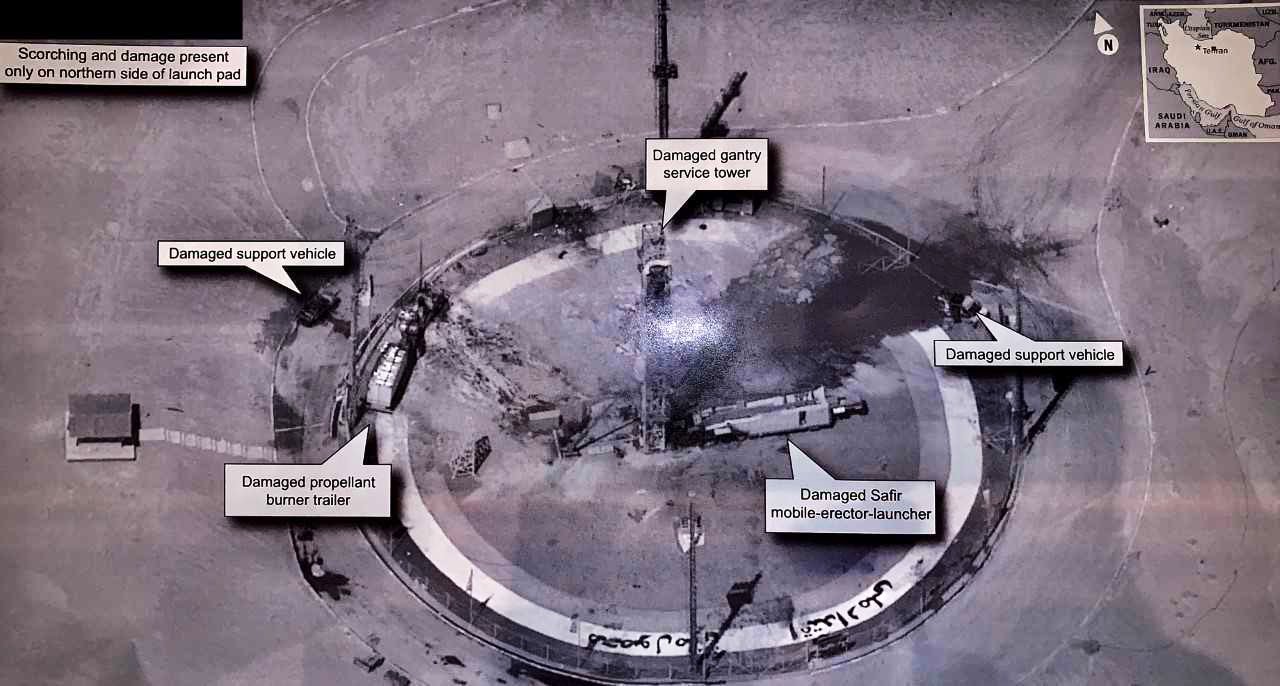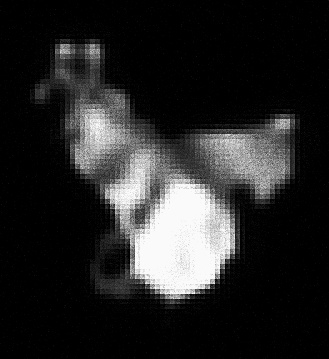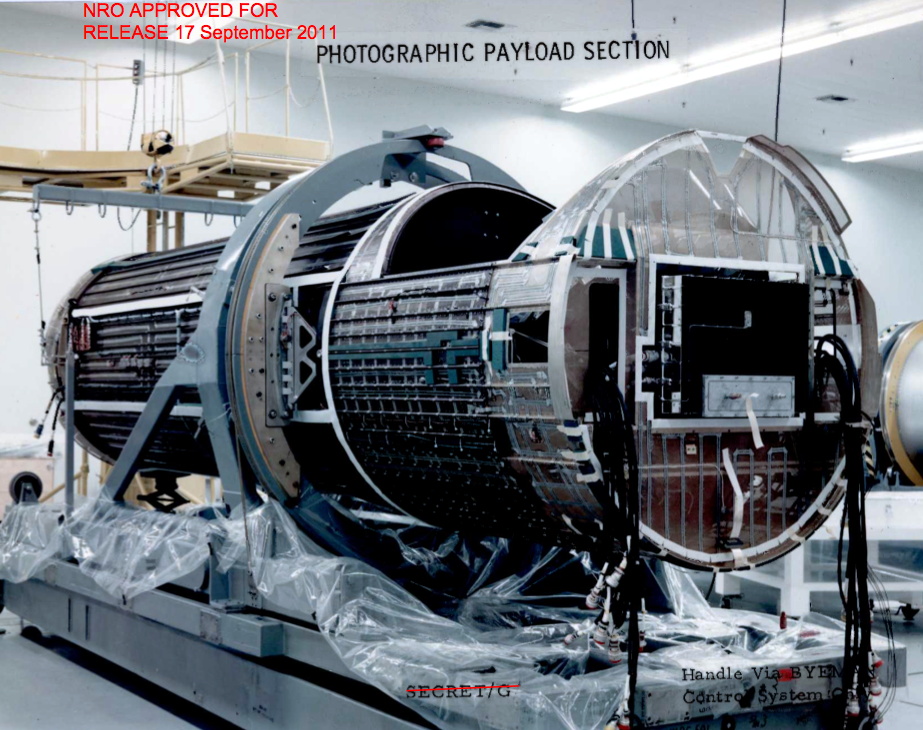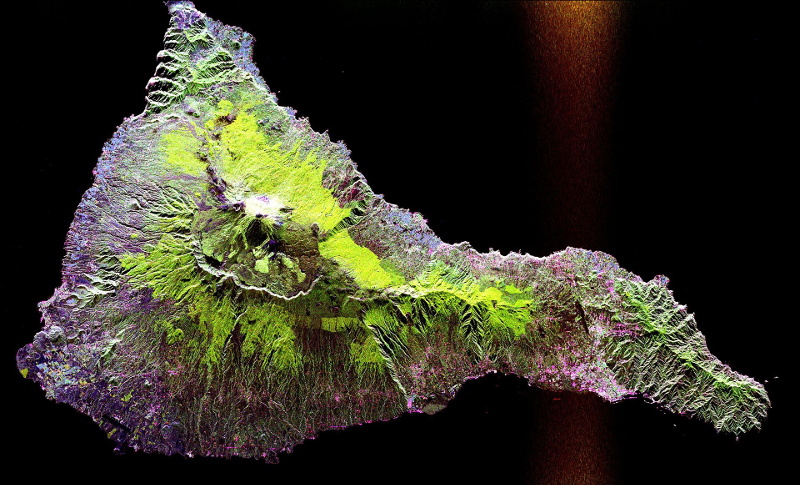Watchmen Watch: The Current State of Space Tracking Facilities

You almost certainly heard about the recent publication of high-definition satellite images that show the consequences of Iran’s unsuccessful attempt to launch its liquid-fuel Safir rocket. The geopolitical consequences of the development of such ballistic missiles by Iran is an interesting story in itself, but in this case we are more interested in how this image was obtained. Considering all the known variables, such as the date and time of the incident, and the location of the pad, the analysts calculated that the image was probably taken by the secret US satellite KH-11 [ keyhole, or “keyhole” / approx. perev. ].

The image is amazing - this level of detail exceeds all means of observation from space, which ordinary citizens have access to. According to some estimates, the photo was taken from a distance of 382 km, and the image resolution, apparently, is no worse than 10 cm per pixel. And given that the satellite’s orbit sometimes sinks up to 270 km above the Earth’s surface, it is likely that its maximum resolution is even higher.
Of course, many aspects of the operation of the KH-11 satellites remain classified, especially the latest versions of the equipment. However, their existence and the concept of work have not been a secret for several decades. The images received from the KH-11 satellites, one way or another, fell into the public domain back in the 1980s and 1990s, and although the image from Iran is definitely of the highest quality, it does not seem so surprising, given the time that has elapsed from previous photos.
But we know much less about what will replace KH-11. The satellite that took this photo is known as USA 224; It has been in orbit since 2011. The United States National Aerospace Intelligence Agency (NRO) has since launched several new spy satellites; it plans to put into orbit a few more until 2021.
Let's take a closer look at the KH-11 series of spy satellites, and compare them with what we know about the capabilities of next-generation orbital observer technologies that are already flying over our heads.
Hubble Secret Agent

The KH-11 KENNEN satellite was developed to replace the film-based KH-9 HEXAGON, which appeared in the 1960s. To receive images from these satellites, it was necessary to send small capsules with a film back to Earth. They entered the atmosphere, and they were caught on the fly by a waiting plane; this process was slow, complex and expensive. The new KH-11 digital technology made it possible to transmit images over a communications network in near real time.
But despite the fact that the first KH-11 was launched back in 1976, not a single photograph of this satellite was in the public domain. Fortunately, analysts have a good idea of his appearance, since he has a very famous cousin: the Space Telescope. Hubble. Both space telescopes with the Ritchie-Chretien optical system (a variation of the Cassegrain system) were built by Lockheed, and as NASA notes, some elements of the Hubble scheme (for example, the main mirror diameter of 2.4 m) were chosen “to reduce the cost manufacturing by using manufacturing technologies developed for military spy satellites. ”

Amateur Photography 2010
And this family resemblance is not just the fruit of idle reasoning. In 2010, and then in 2015, astrophotography enthusiast Ralph Vandeberg was able to directly shoot two different KH-11 satellites using amateur equipment. And, despite the relatively low technology of the equipment used, he was able to photograph these secret devices, and these photos confirm the analysts' suspicions that they are very much like the Hubble.
In these grainy photos you can see a similar conical shape, as well as an aperture cover at the end of the telescope. The KH-11 also has at least one solar “wing” like the Hubble, and possibly a directional antenna on the other side; although Ralph says it could just be a sun flare.
The size of the KH-11 is almost certainly the same diameter as the Hubble, since they have the same mirrors, but rumored to be not so long. The shortened focus length will give the KH-11 a wider field of view than the Hubble, and this is more suitable for observing what is happening on the ground.
Best possible
If only one person with consumer-grade equipment could find, track and photograph two KH-11 satellites, it is reasonable to assume that this was also possible for foreign intelligence. It is unlikely that any satellites that are technologically advanced can be taken by surprise.
Of course, to know about their existence, and to know what they are capable of are two different things. But it turns out that this question is quite easy to answer. The angular resolution of the telescope can be calculated using the Rayleigh criterion , which takes into account the length of the observed wave and the diameter of the aperture. This angular resolution, coupled with the satellite’s altitude at the time of observation, can tell us how large the object should be so that the KH-11 can notice it from orbit.

KH-8 GAMBIT had a similar resolution
For a 2.4 m diameter mirror observing a wavelength of 500 nm, the Rayleigh criterion gives a diffraction-limited resolution of 0.05 arc seconds. At an altitude of 250 km, this turns into a resolution of 6 cm on the surface. It is worth considering that this maximum is theoretical, and in practice the resolution will be less due to atmospheric distortions and due to the fact that the satellite is unlikely to be exactly above the observed place. It turns out that with an estimated resolution of 10 cm, Iranian photography is within the estimated capabilities of KH-11.
Again, for reconnaissance of a potential enemy, it will not be difficult to conduct all these calculations and understand what the KH-11 can see. Especially considering the fact that the United States uses spy satellites with such a physical resolution for more than 50 years. The KH-8 GAMBIT, a film spy satellite that was launched in 1966, was also capable of viewing objects ranging in size from 5 to 10 cm under ideal conditions.
Next generation
It may seem strange that the resolution of the 1966 American spy satellite is comparable to the resolution of modern satellites, given how much technology has stepped forward. But, in fact, these telescopes are optical, and the physics that controls their work was calculated long before one could dream of sending them into space. The peripheral equipment of telescopes has definitely evolved since the 1960s - engines, throughput, power consumption, and reliability. However, a mirror with a diameter of 2.4 m will work today as it did 50 or 100 years ago.

Image obtained using aperture radar synthesis
And if the capabilities of optical telescopes are close to physical limits, where can you move on? The most obvious way to increase the efficiency of these satellites is to use image enhancement programs. Thanks to the computing breakthroughs of the last decade, images from telescopes can be sharpened and digitally cleaned. Perhaps that is why the Iranian image looks better than the KH-11 images published in the 1990s, although the real resolution of the telescope has not changed since then.
Well, besides this, it is believed that newer spy satellites, such as, for example, NROL-71 , launched in January 2019, can complement or even replace optical telescopes with other technologies, in particular, using aperture radar synthesis (PCA) ) A satellite with a radar has many advantages over the optical - for example, the ability to observe the target at night or in bad weather. In laboratory conditions, SARs reached a resolution of less than a millimeter, and although the real resolution when looking at a target from hundreds of kilometers will be clearly less, this technology has the potential to bring observation from orbit beyond the physical limitations that existed since the launch of the first Cold Spy satellites war.
All Articles